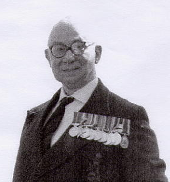



The Parish Church of St George the Martyr, Waterlooville

Christmas & New Year 2015/6
Diaries of a First World War Bugler
24th APRIL 1916.
This day brings me to my 21st Birthday and also Easter Monday. I had a very good time what with the parcels from my Ma and Dad and sister and the three parcels from May. I could not help thinking of the way I spent my 20th birthday running away from the Germans. The rest of the month of April was spent in training.
1st MAY 1916.
At last we were going to move. We started at 9 o’clock in the morning and marched till 1 o’clock. Here we rested in a field till 4 o’clock for it was a boiling hot day and it does not do to march troops during the heat of the day. Starting off once more we eventually arrived at Deuenville about 8 o’clock in the evening relieving the 1/3 Royal Fusiliers. This place was a little over two miles behind the first line of trenches and Arras.
It was surrounded by heavy artillery, the place itself was not large, some civilians still lived there. Now this place was always being looked at by the German aeroplanes so that during the day time nobody was allowed out except on duty. Our buglers did the aeroplane duties; I was doing night duty attached to the Orderly Room. The second morning I went out to speak to a sentry when sh........... over came a shell. It went bang through the roof of the house in front of me. I got flat against the wall and did not look for souvenirs! Well we only stayed here three days. On the night of the third day we started back for our last resting place. We marched all night and eventually arrived at Houvin-
This came on 20th MAY 1916. Leaving Halloy at 7 o’clock in the evening we marched to St. Amand, about 7 miles nearer the firing line. This place contained several big guns 9.2’s and my word they did bark! We stayed here for one night only. At 2 o’clock the next day we paraded once again in full pack and marched to Sailly au Bois. I was in charge of 8 buglers who did aerial duties in this village. The rest of the band stayed further back at a place called Bayencourt. Now this place Sailly was far from nice. We had 7 guns, 4.5’s, at the back of us, also 4 big 60 Pounders so you can guess what an awful noise we were subjected to.

To mark the 100th anniversary of the outbreak of World War I, we are continuing the serialisation of the diaries of Bugler John McCormack -
10th APRIL 1916. Monday.
My old friend Harold Chapman came over to see me. I was so pleased to see him it recalled the old days and pleasant memories.
23th APRIL 1916. Sunday.
Up to this time various trainings have been our every day programme. My friend Sergeant Pearson, and I journeyed into the nearest large town named Prevent. Here we had a pretty good time.
The congested interior of a dugout 15 feet underground
On the 24th MAY 1916 one bugler and myself were sent to a firing line on duty. Now the trenches run through a place called Hebuteurn. Now either the British Army is getting slack or else we are more daring. This village is 800 yards from the Germans. When we went up there it was pitch black dark. The first thing we noticed was an incinerator, alight if you please! On the left of the road dug right under the earth, almost like the tube railway, was a dressing station for the wounded. A marvellous piece of work this was. Running through the village was a light railway. The houses had suffered terribly from shell-
All the roads are barricaded and there are “beaucoup de dug-
26th MAY 1916.
Turned out to be a fine day. One of my buglers, Davies, and myself had been out in the fields laughing and joking whilst writing letters to our respective mothers. At 4.30 we returned for tea. We had no sooner got it when the German artillery commenced to shell us. They put about 30 shells over, oh God! I shall never forget it. They were knocking holes in our billets right left and centre. Men were falling everywhere. Picking up my cigarettes and shrapnel helmet I rushed for a dug-
To be continued